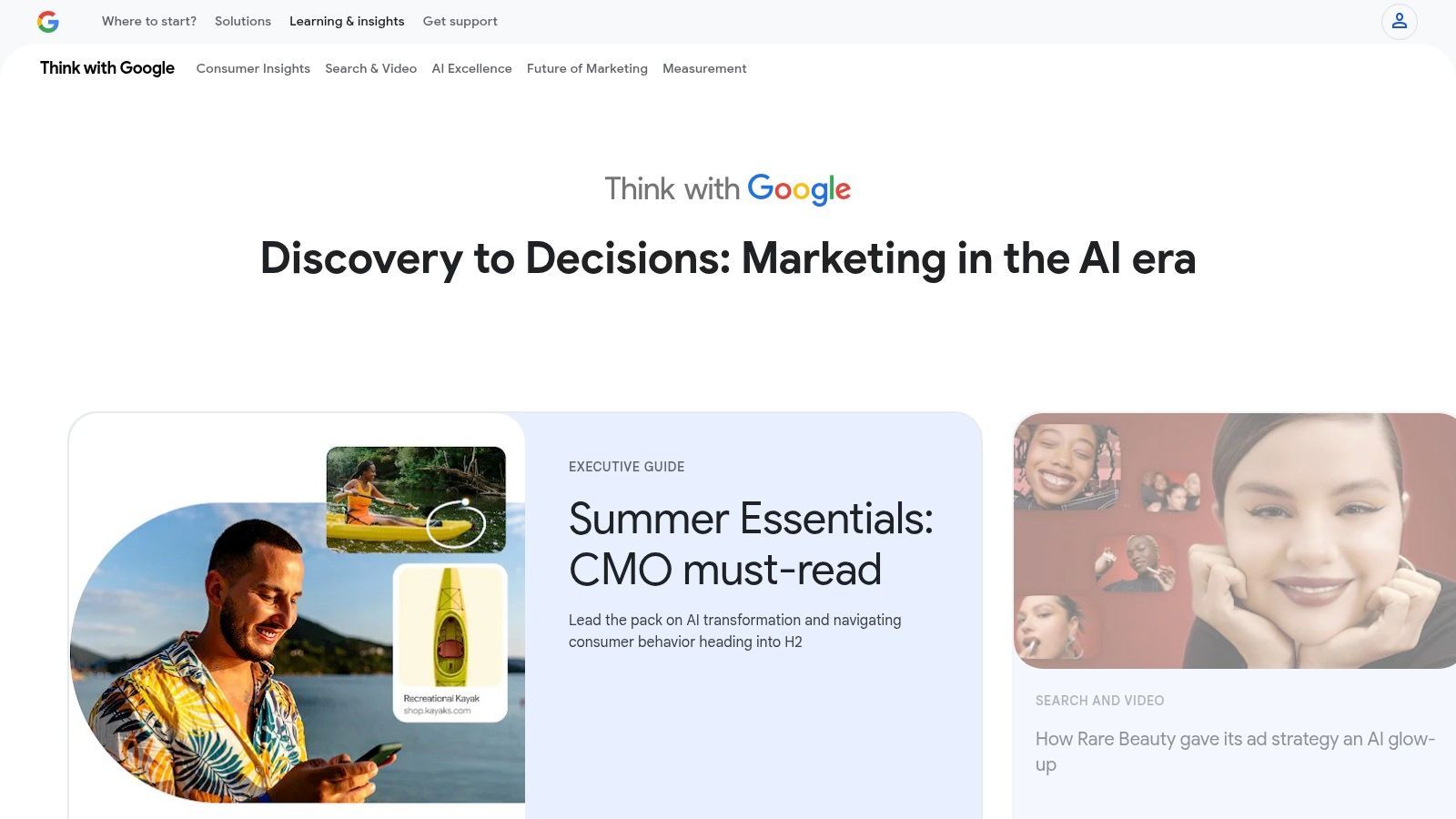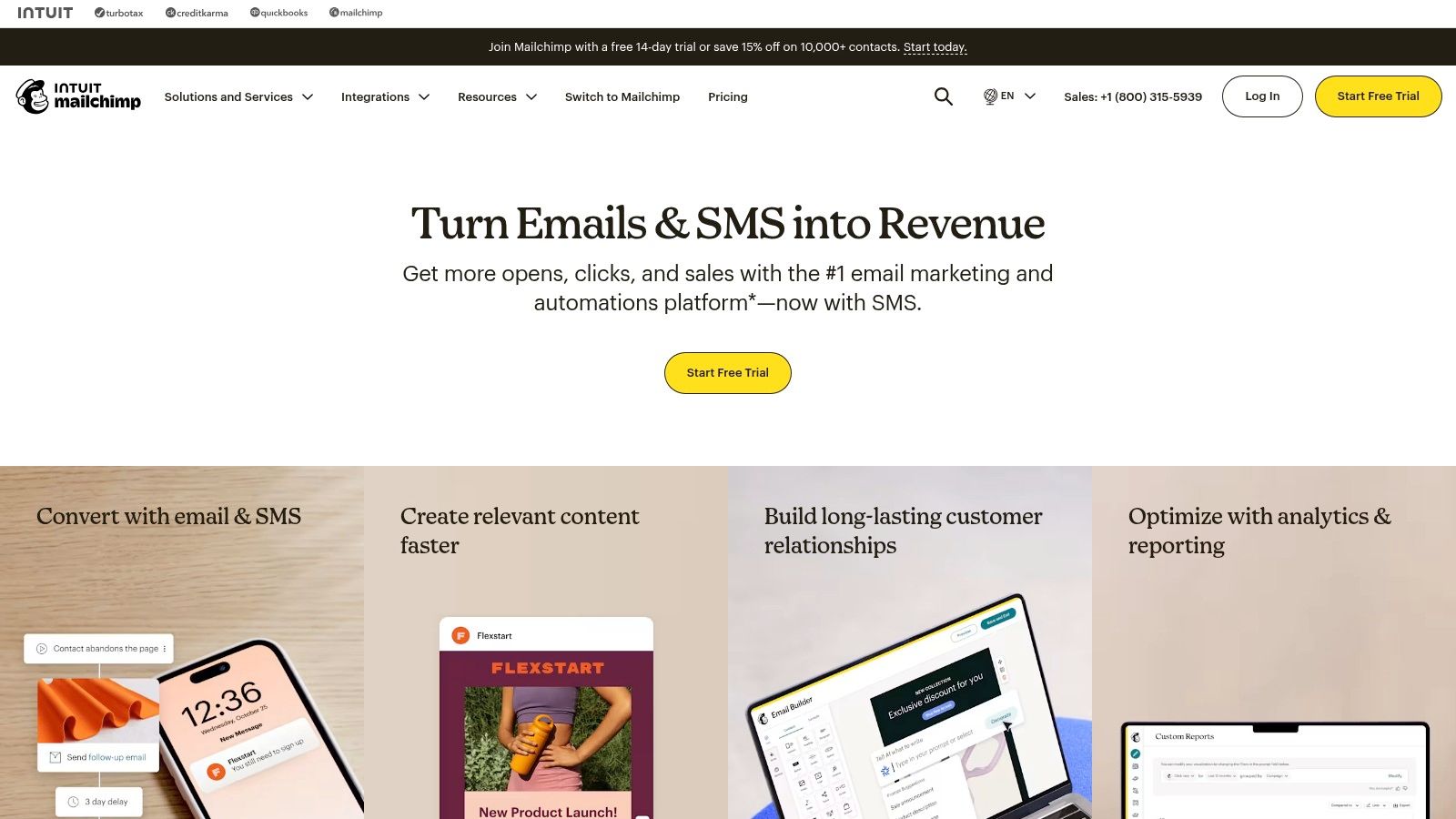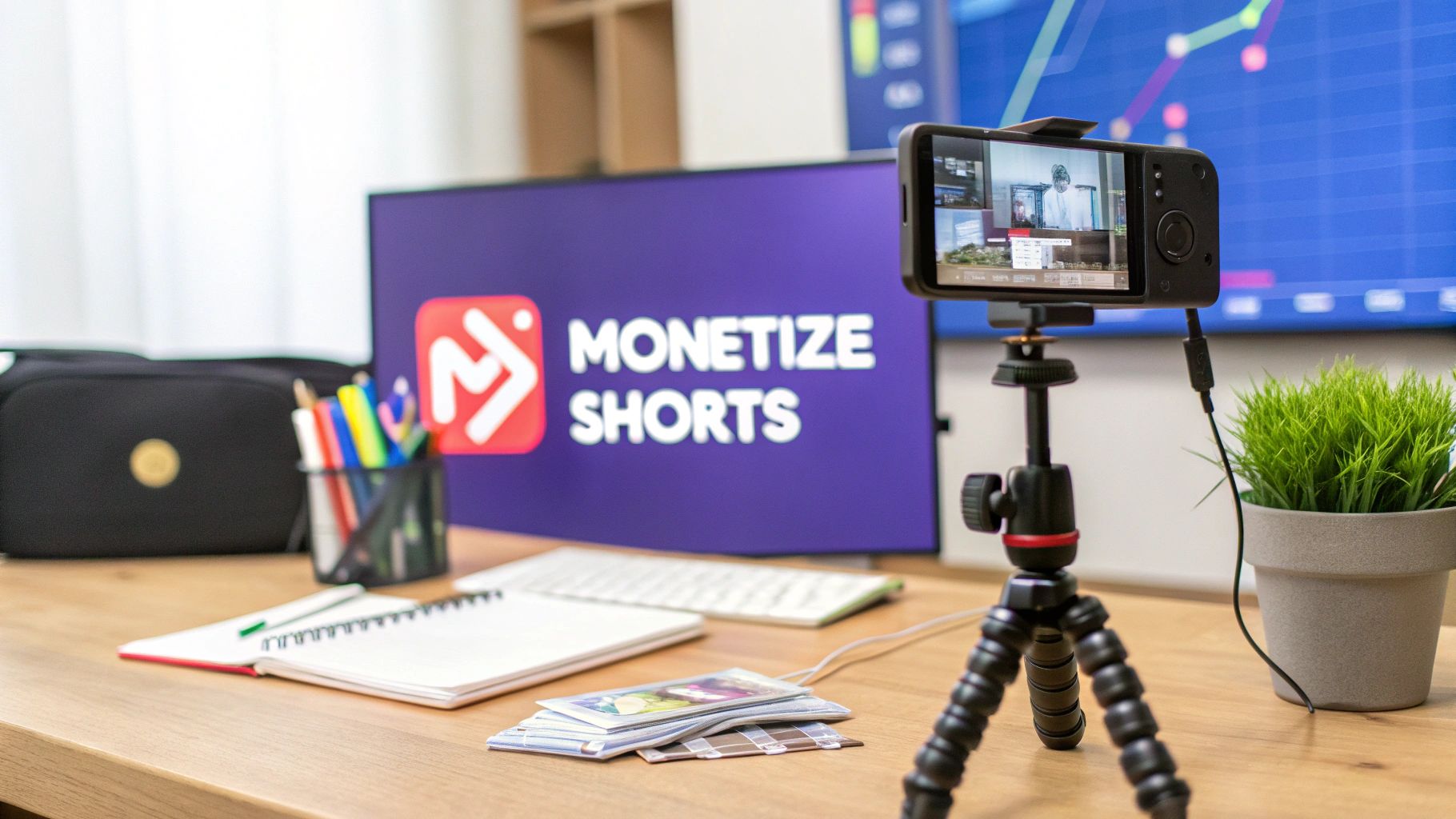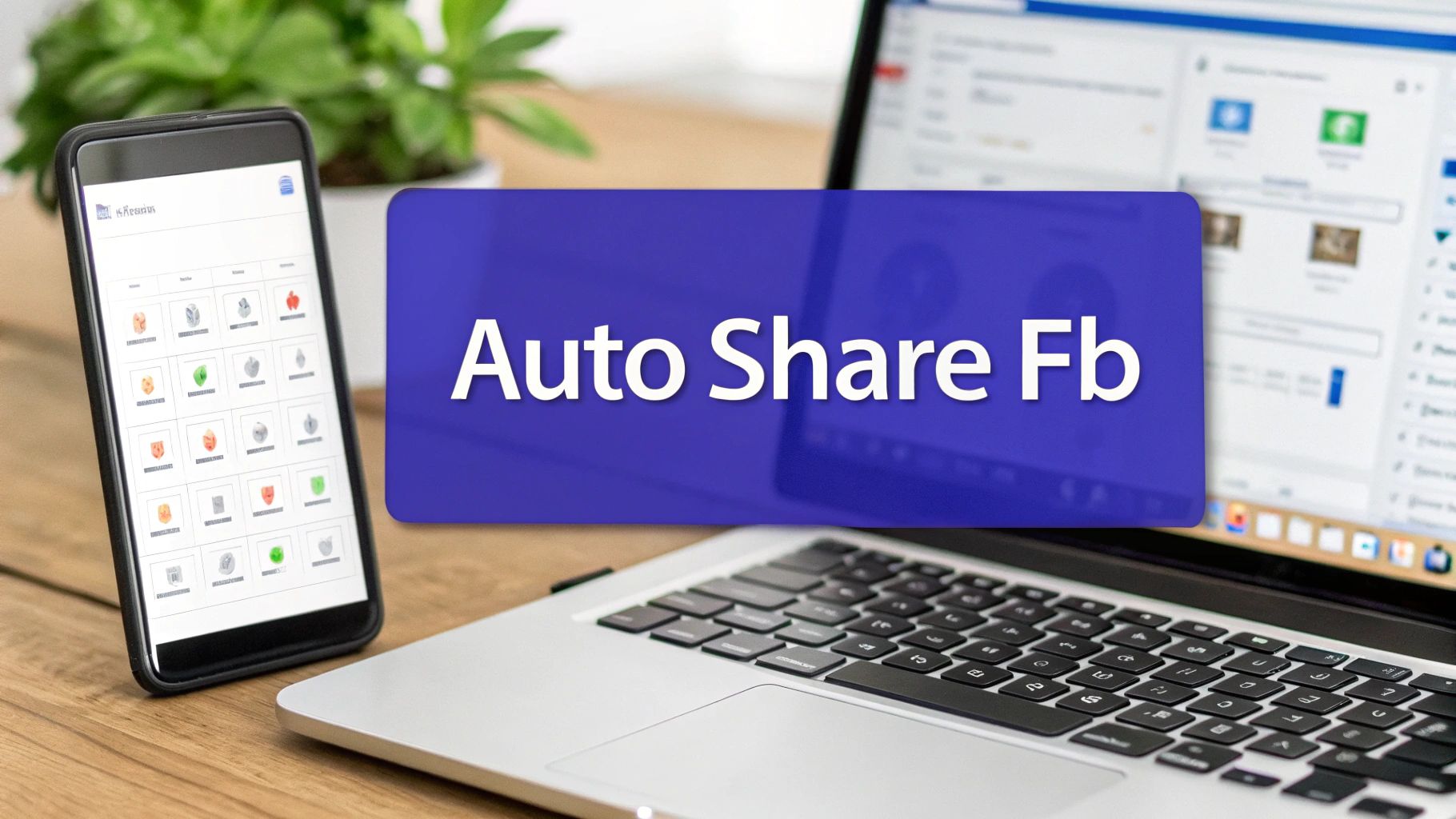In a fragmented media environment, reaching your audience requires a cohesive brand experience across every touchpoint. This is the core of multi-channel marketing: meeting customers where they are, whether on social media, in their inbox, or through a search query, with a consistent message that guides their journey. But moving from theory to execution can be challenging. How do you orchestrate a campaign that feels unified, not disjointed?
This guide moves beyond abstract concepts to deliver a tactical breakdown of real-world multi channel marketing campaign examples. We will dissect the strategies, channels, and creative thinking that powered their success. For each example, you’ll find a deep-dive analysis covering the objectives, channel mix, creative execution, and performance metrics, complete with screenshots for visual context.
You will gain a strategic blueprint and actionable takeaways to build your own high-impact campaigns. Forget surface-level success stories; this is about uncovering the replicable methods behind the results. Our goal is to equip you with the insights needed to create campaigns that don't just reach your audience, but truly resonate and drive measurable growth. Let's explore the blueprints of modern marketing success.
1. Think with Google
For marketers seeking data-backed, actionable multi channel marketing campaign examples, Google's official marketing resource hub is an unparalleled starting point. Think with Google isn't just a blog; it's a comprehensive library of case studies, research papers, and strategic playbooks built directly from Google's vast ecosystem of data. It provides an insider's look into how successful brands leverage Search, YouTube, Display, and other channels in a coordinated fashion.

What makes this resource uniquely valuable is its focus on measurable outcomes. Each case study goes beyond vanity metrics, detailing concrete results like return on ad spend (ROAS), cost per acquisition (CPA), and documented lift in store visits. This makes it an essential tool for building a business case for a multi-channel strategy.
Strategic Breakdown & Key Features
Think with Google excels at connecting high-level strategy with granular tactical execution. It offers detailed guides on deploying tools like Performance Max for unified campaigns and provides evidence for cross-media strategies, such as combining traditional TV advertising with YouTube for incremental reach.
- Access Requirements: The platform is completely free to access, with no subscription required for most content. Some in-depth reports or tools may ask for a Google account sign-in.
- Unique Offerings: It provides a searchable case study hub that can be filtered by industry, region, platform, and marketing objective, making it easy to find relevant examples.
- User Experience: The interface is clean and intuitive, designed for easy navigation. Content is well-organized with clear headings, data visualizations, and strategic takeaways.
How to Use It Effectively
To get the most out of Think with Google, use the "Marketing Strategies" and "Consumer Insights" sections to understand the "why" behind a campaign before diving into the "Case Studies" for the "how." The platform frequently publishes new research on consumer behavior, which can inform your channel selection and messaging. For instance, you can find specific data on how mobile search influences in-store purchases and then find a case study demonstrating that exact principle in action.
| Feature Highlights | Details |
|---|---|
| Primary Focus | Data-backed case studies and multi-channel playbooks. |
| Cost | Free; some content requires a Google account. |
| Key Advantage | Direct insights from Google with measurable results (ROAS, store visits). |
| Limitation | Heavily focused on the Google Ads ecosystem. |
Website: https://www.thinkwithgoogle.com
2. WARC (Warwick/Ascential)
For agencies and corporate marketing teams that require rigorous, award-winning multi channel marketing campaign examples, WARC stands as the gold standard. It is a comprehensive subscription-based intelligence service offering deep-dive case studies from global effectiveness and strategy awards. WARC goes far beyond surface-level descriptions, providing detailed breakdowns of campaign strategy, channel mix, creative execution, budget allocation, and documented results.
What makes WARC indispensable for serious strategists is its focus on "why" a campaign succeeded. It provides the strategic context, competitive landscape, and consumer insights that drove decision-making. This allows marketers to not just see what worked, but to understand the fundamental principles they can apply to their own challenges, making it a powerful tool for strategic planning and competitive benchmarking.
Strategic Breakdown & Key Features
WARC’s content is built on a foundation of evidence and effectiveness. The platform provides access to thousands of case studies, trend reports, and best-practice guides that dissect complex campaigns, from FMCG giants to disruptive tech startups. It reveals the intricate interplay between channels like social media, programmatic display, search, and offline media, all backed by hard data.
- Access Requirements: WARC is a premium subscription service with bespoke pricing not publicly listed. It is primarily designed for enterprise clients, agencies, and academic institutions.
- Unique Offerings: It features an extensive database of award-winning case studies, including many from prestigious awards like the Cannes Lions and Effies, often with media budget details. It also offers proprietary benchmarks and trend forecasts.
- User Experience: The platform is a powerful research tool with robust search and filtering capabilities. While dense with information, it's structured for strategic research, and corporate plans often include dedicated client service for onboarding and support.
How to Use It Effectively
Start by using WARC for competitive intelligence and category analysis. Before planning a campaign, search for case studies from your industry or from brands that have tackled similar marketing objectives. Use the "Anatomy of Effectiveness" and other best-practice guides to build a strategic framework. Leverage the detailed media mix and budget information in the case studies to inform your own channel planning and resource allocation.
| Feature Highlights | Details |
|---|---|
| Primary Focus | In-depth, award-winning case studies with strategic and budget details. |
| Cost | Premium subscription with bespoke pricing. |
| Key Advantage | Unparalleled depth and rigor for strategic planning and competitive benchmarking. |
| Limitation | High cost makes it better suited for large agencies and enterprise teams. |
Website: https://www.warc.com
3. HubSpot
For teams looking to not only learn about but also execute multi channel marketing campaign examples within a single platform, HubSpot is an indispensable resource. More than just a marketing automation tool, HubSpot’s extensive blog, Academy, and template library provide a treasure trove of practical guides and real-world case studies. It bridges the gap between theoretical knowledge and practical application, showing how to orchestrate email, social media, ads, and landing pages from a unified dashboard.

What makes HubSpot uniquely powerful is its integration of educational content with its powerful CRM and marketing software. You can read an in-depth guide on creating a lead nurturing campaign and then immediately use HubSpot's templates and automation workflows to build that exact campaign. This practical, hands-on approach is ideal for SMBs and mid-market teams aiming to implement sophisticated strategies without a large, specialized staff.
Strategic Breakdown & Key Features
HubSpot excels at providing end-to-end campaign orchestration, connecting every marketing touchpoint back to a central CRM record. This allows for deeply personalized and automated communication across channels, from the first ad click to the final sale. The platform provides detailed reporting that tracks customer journeys, making it clear which channels contribute most effectively to conversions.
- Access Requirements: The blog and Academy are completely free. The software offers a range of free tools, with paid plans on a tiered subscription model. A 14-day free trial is available for premium features.
- Unique Offerings: It provides an integrated platform where users can manage ads, email, social media, SEO, and automation, all tied to a robust CRM. Its library of free templates and educational guides is a major differentiator.
- User Experience: The interface is known for its clean design and user-friendliness, though the advanced automation features come with a learning curve. The onboarding process and customer support are well-regarded.
How to Use It Effectively
Start by exploring the HubSpot Academy for free courses on inbound and multi-channel marketing to build a strong strategic foundation. Use the free tools to get a feel for the platform's capabilities. When ready to launch a campaign, browse their blog for specific "how-to" guides and case studies relevant to your industry, then adapt their proven templates for your own landing pages and email sequences.
| Feature Highlights | Details |
|---|---|
| Primary Focus | Integrated platform for campaign execution with extensive educational resources. |
| Cost | Free blog/academy; tiered software plans with free tools available. |
| Key Advantage | Combines learning and execution in one place; strong CRM integration. |
| Limitation | Advanced features can become costly, and higher tiers may have onboarding fees. |
Website: https://www.hubspot.com/products/marketing/
4. Mailchimp
For small businesses and marketers looking for an accessible, all-in-one platform to execute their campaigns, Mailchimp offers a powerful suite of tools. While best known for email marketing, it has evolved into a comprehensive hub where users can find practical multi channel marketing campaign examples and deploy them directly. Mailchimp excels at connecting email, social ads, digital landing pages, and even direct mail postcards into cohesive customer journeys.

What makes Mailchimp a standout resource is its emphasis on simplicity and actionability. The platform provides pre-built templates and visual customer journey builders that demystify the process of creating multi-touch campaigns. This allows users to quickly launch automated sequences, such as sending a follow-up email to a customer who engaged with a social ad, without needing deep technical expertise.
Strategic Breakdown & Key Features
Mailchimp's strength lies in its visual "Customer Journey" builder, which allows marketers to map out automated, multi-step campaigns with branching logic. For example, a user can design a flow that sends a welcome email, waits three days, and then retargets non-openers with a social media ad. This approach makes it easy to visualize and execute a coordinated strategy across different touchpoints.
- Access Requirements: Mailchimp offers a free plan with basic features for up to 500 contacts. Paid plans are required for advanced features like the journey builder and A/B testing, with pricing scaling based on contact list size.
- Unique Offerings: The platform uniquely integrates digital channels like email and social ads with physical direct mail (postcards). Its robust library of third-party integrations also allows for seamless connection to e-commerce platforms like Shopify and WooCommerce.
- User Experience: The interface is famously user-friendly and intuitive, designed for marketers who are not developers. The drag-and-drop editors and clear plan comparisons make getting started straightforward.
How to Use It Effectively
To maximize Mailchimp, start by integrating it with your primary sales channel (e.g., your e-commerce store). Then, use the "Customer Journey" templates as a starting point. For instance, you can use the "abandoned cart" template to automatically trigger a sequence of emails and social ads to recover lost sales. Exploring how to automate social media posts can further enhance your campaign's reach and consistency within these journeys. The platform's extensive knowledge base and case studies provide excellent inspiration for building your own integrated campaigns.
| Feature Highlights | Details |
|---|---|
| Primary Focus | Accessible multi-channel automation for SMBs. |
| Cost | Free plan available; paid tiers scale with contacts. |
| Key Advantage | Visual journey builder and user-friendly interface. |
| Limitation | Advanced features and SMS are tied to higher-cost plans and geographic restrictions (US/UK). |
Website: https://mailchimp.com
5. Salesforce Marketing Cloud
For enterprises aiming to build and manage their own sophisticated multi channel marketing campaign examples, Salesforce Marketing Cloud provides the underlying architecture. Rather than being a library of case studies, it is an enterprise-grade platform where complex, AI-driven omnichannel campaigns are created and executed. It offers a direct view into the tools large organizations use to orchestrate journeys across email, mobile, SMS, digital advertising, and web personalization.

What makes this platform a crucial resource is its emphasis on the "how" of execution at scale. Its feature set, particularly Journey Builder, demonstrates how to connect disparate channels into a single, cohesive customer experience. Exploring its capabilities provides a blueprint for what's possible when data from a CRM is seamlessly integrated with every marketing touchpoint.
Strategic Breakdown & Key Features
Salesforce excels at unifying customer data to power personalized, automated communication flows. Its Einstein AI layer adds a predictive element, helping marketers optimize send times, content, and channel selection based on user behavior. This integrated approach is a core component of advanced marketing workflow management software and a key differentiator from smaller, channel-specific tools.
- Access Requirements: This is a premium, enterprise-level SaaS platform with pricing based on edition, contact volume, and add-ons. Transparent pricing is available on their website, but expect a significant investment.
- Unique Offerings: The Journey Builder tool is a standout, allowing marketers to visually map and automate complex customer pathways across email, mobile, ads, and web. Native CRM integration ensures all communications are data-rich.
- User Experience: The interface is powerful but complex, reflecting its enterprise focus. It has a steeper learning curve compared to SMB-focused tools, requiring dedicated training for mastery.
How to Use It Effectively
To understand its potential, start by exploring the pricing and edition comparison pages. This gives a clear overview of the features that define enterprise-level multi-channel marketing, such as advanced segmentation, predictive intelligence, and role-based permissions. Use the "Demos" and "Customer Stories" sections to see how brands in your industry leverage the platform to build their own multi-channel campaigns, connecting the platform's features to real-world results.
| Feature Highlights | Details |
|---|---|
| Primary Focus | Enterprise platform for building and executing omnichannel campaigns. |
| Cost | Premium; pricing is subscription-based and tiered. |
| Key Advantage | Deep CRM integration and powerful Journey Builder for true cross-channel automation. |
| Limitation | High total cost and a steep learning curve not suitable for small businesses. |
Website: https://www.salesforce.com/marketing/pricing/
6. Adobe Marketo Engage
For enterprise B2B and B2C marketers looking to build and automate sophisticated multi channel marketing campaign examples, Adobe's Marketo Engage is a foundational platform. It moves beyond simple campaign execution into orchestrating complex customer journeys across email, paid media, web personalization, and live or virtual events. Its strength lies in deep automation and a data-centric approach to lead nurturing and account-based marketing (ABM).

What makes Marketo Engage a powerful tool is its focus on attribution and analytics. It enables marketing teams to connect their multi-channel efforts directly to revenue, providing the kind of in-depth reporting required to justify marketing spend and optimize strategies. This enterprise-grade depth is ideal for organizations managing long, complex sales cycles with multiple touchpoints.
Strategic Breakdown & Key Features
Marketo Engage excels at creating personalized, automated communication flows that adapt to user behavior. It leverages features like predictive content and advanced audience segmentation to ensure the right message reaches the right person on the right channel at the right time. Its robust integration ecosystem further extends its capabilities, connecting with popular CRM, webinar, and data platforms.
- Access Requirements: This is a premium, enterprise-level platform with no public pricing. Access is provided upon purchasing a customized package, and implementation often requires professional services.
- Unique Offerings: It offers advanced features for Account-Based Marketing (ABM), including AI-powered account profiling and cross-channel engagement tracking for target accounts.
- User Experience: The interface is powerful but can have a steep learning curve due to its complexity. It is designed for experienced marketing operations professionals rather than beginners.
How to Use It Effectively
To maximize value from Marketo Engage, start by mapping out your customer journey in detail. Use its lead scoring and lifecycle modeling features to define clear stages from awareness to advocacy. Leverage its webinar and event tools to create integrated campaigns that capture leads and nurture them through automated, personalized email follow-ups and targeted ad campaigns. The key is to use its attribution models to continuously refine which channels are driving the most valuable engagement.
| Feature Highlights | Details |
|---|---|
| Primary Focus | Enterprise B2B/B2C marketing automation and revenue attribution. |
| Cost | Quote-based; requires a significant investment with potential service costs. |
| Key Advantage | Robust cross-channel nurturing and enterprise-grade analytics for ROI. |
| Limitation | High cost and complexity can be prohibitive for smaller businesses. |
Website: https://business.adobe.com/products/marketo.html
7. Meta for Business – Success Stories
For marketers looking to master social commerce and messaging, the official Meta for Business Success Stories hub offers a treasure trove of multi channel marketing campaign examples. This resource provides an in-depth look at how businesses orchestrate campaigns across Facebook, Instagram, Messenger, and WhatsApp. It moves beyond simple social media posts, showcasing sophisticated strategies that integrate Reels, Advantage+ shopping, and click-to-message ads into a single, cohesive customer journey.
What sets this platform apart is its focus on the connected Meta ecosystem. The case studies provide clear, measurable proof of how different surfaces work together to drive business goals, from raising brand awareness on Instagram to closing sales via WhatsApp conversations. This makes it an essential resource for building a modern social and conversational marketing strategy.
Strategic Breakdown & Key Features
Meta’s hub excels at demonstrating the practical application of its newest ad products and features. It provides clear examples of how to combine top-of-funnel video content on Reels with bottom-of-funnel conversion ads, all while tracking performance lift. These studies often detail the specific creative and targeting strategies used, offering a blueprint for marketers to adapt.
- Access Requirements: The platform is completely free to access, with no account or login required to view the case studies.
- Unique Offerings: It features a detailed, filterable library of success stories that can be sorted by business size, industry, objective, and products used (e.g., Reels, Advantage+, Messenger).
- User Experience: The site is clean and visually driven, with a card-based layout that makes it easy to browse campaigns. Each story is concisely written with key stats highlighted for quick consumption.
How to Use It Effectively
To maximize value, use the filters to find campaigns that closely match your own industry and marketing objectives. Pay close attention to examples that utilize "Click-to-Message" features, as they provide powerful insights into blending automated advertising with personal, one-on-one customer engagement. Additionally, you can find inspiration for managing multiple social channels effectively, a strategy further explored when considering tools for maximizing social media impact with cross-posting.
| Feature Highlights | Details |
|---|---|
| Primary Focus | Official case studies for Facebook, Instagram, Messenger, and WhatsApp. |
| Cost | Free; no account required. |
| Key Advantage | Measurable results and strategic insights for the Meta ad ecosystem. |
| Limitation | Entirely platform-centric; only covers Meta-owned channels. |
Website: https://www.facebook.com/business/success
Multi-Channel Campaign Examples Comparison
| Platform | Implementation Complexity 🔄 | Resource Requirements ⚡ | Expected Outcomes 📊 | Ideal Use Cases 💡 | Key Advantages ⭐ |
|---|---|---|---|---|---|
| Think with Google | Low - easy access, mostly reading | Minimal - free with optional sign-in | High - data-backed, measurable ROAS and lifts | Marketers seeking cross-media case studies | Free, practical omnichannel tactics, up-to-date |
| WARC (Warwick/Ascential) | High - subscription with deep research | High - enterprise budget & team resources | Very High - award-winning cases & benchmarking | Strategic planners and competitive benchmarking | Comprehensive, rigorous, best-practice insights |
| HubSpot | Medium - integrated platform setup | Medium - tiered pricing, CRM integration | High - multi-channel campaign management | SMBs to mid-market needing learn & execute | Usability, scalability, extensive educational |
| Mailchimp | Low to medium - user-friendly UI | Low to medium - pricing scales by contacts | Medium - fast campaign launches | Small businesses wanting simple, multi-touch | Easy start, visual flows, strong paid support |
| Salesforce Marketing Cloud | High - complex setup and training | Very high - enterprise costs and services | Very High - AI-driven, omnichannel orchestration | Large enterprises with complex marketing needs | Enterprise-grade, AI insights, strong control |
| Adobe Marketo Engage | High - enterprise-grade implementation | High - custom quotes & ongoing costs | Very High - advanced nurturing and attribution | B2B/B2C enterprises needing account-based marketing | Robust analytics, frequent updates |
| Meta for Business | Low - simple case study access | Minimal - free access | Medium to High - measurable Meta-specific lifts | Social marketers focused on Meta ecosystem | Free, focused, up-to-date official success stories |
Orchestrate Your Next Winning Campaign
The diverse multi channel marketing campaign examples we've explored, from global giants showcased on WARC to the agile startups featured in HubSpot's case studies, all share a foundational principle: strategic integration. Success isn't born from simply being present on multiple platforms; it's achieved by weaving a cohesive narrative that guides the customer seamlessly from one touchpoint to the next. Each channel plays a distinct, yet complementary, role in the broader customer journey.
The common thread is the deliberate orchestration of content, timing, and messaging. A well-executed campaign feels like a continuous conversation, where an email newsletter naturally leads to a targeted social media ad, which then directs a user to a personalized landing page. This level of synergy prevents the disjointed experiences that can derail customer engagement and erode brand trust.
From Inspiration to Implementation
Transforming these insights into your own winning strategy requires moving from analysis to action. The examples from Salesforce and Adobe Marketo highlight the power of sophisticated marketing automation, while Mailchimp demonstrates how even small businesses can achieve remarkable results with focused, well-timed campaigns. The key is to select tools that align with your team's specific needs, budget, and strategic goals.
Consider the following factors as you build your own multi-channel toolkit:
- Scalability: Will the platform grow with you? Choose a tool that supports your business from its current stage to its future ambitions.
- Integration: How well does the tool connect with your existing systems (e.g., CRM, e-commerce platform, analytics software)? Seamless integration is crucial for a unified data view.
- Analytics & Reporting: Does the tool provide deep, actionable insights? The ability to measure performance across channels is non-negotiable for optimizing your ROI.
As you plan, it's also vital to distinguish between multi-channel and its close relative, omnichannel. While multi-channel focuses on optimizing performance within each channel, omnichannel marketing creates an even more integrated, customer-centric experience across all touchpoints. To gain further insights into successful implementations and contemporary strategies, explore leading omnichannel marketing examples for 2025.
Your Blueprint for Success
The most powerful takeaway from these multi channel marketing campaign examples is the importance of a centralized command center. Managing multiple platforms independently is a recipe for inefficiency and inconsistency. To truly orchestrate a campaign, you need a unified dashboard that provides a bird's-eye view of your entire marketing ecosystem.
This centralized approach empowers you to schedule content strategically, monitor conversations in real-time, and analyze performance data holistically. By doing so, you can make informed decisions that amplify your message and drive measurable results. The goal is to create a marketing engine that is not only powerful but also sustainable, allowing your team to focus on creativity and strategy rather than getting lost in manual, repetitive tasks.
Ready to unify your social media efforts and build your next successful multi-channel campaign? PostSyncer provides a powerful, AI-driven platform to schedule, manage, and analyze all your social content from one central dashboard. Streamline your workflow and turn disparate posts into a cohesive strategy by trying PostSyncer today.















